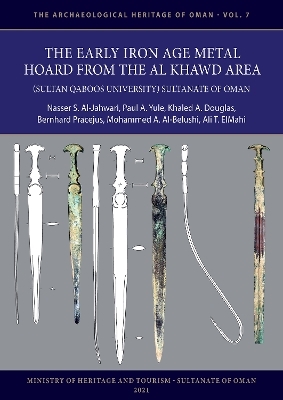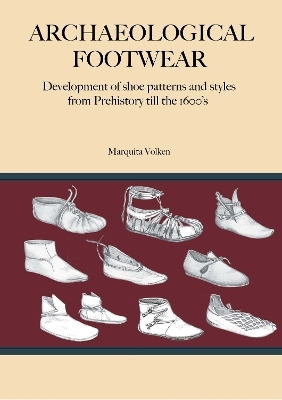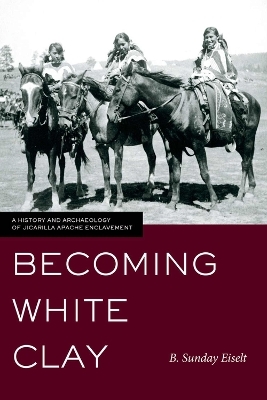
The Early Iron Age Metal Hoard from the Al Khawd Area (Sultan Qaboos University), Sultanate of Oman
Archaeopress Archaeology (Verlag)
978-1-80327-082-1 (ISBN)
Numerous metallic artefacts, which anciently were deposited in a hoard, came to light per chance on the campus of the Sultan Qaboos University in Al Khawd, Sultanate of Oman. Mostly fashioned from copper, these arrowheads, axes/adzes, bangles, daggers, knives, socketed lance/ spearheads, metal vessels, razors, rings, swords, and tweezers compare well with numerous documented artefact classes from south-eastern Arabia assigned to the Early Iron Age (1200–300 BCE). Discussion of the international trade between ancient Makan, Dilmun, and Mesopotamia during the 3rd millennium BCE dominates the archaeological literature about Arabia archaeology. The Al Khawd hoard and its contemporaries lend weight to the suggestion that 1st millennium BCE Qadē (the name of south-eastern Arabia at that time) was even more important than Bronze Age Makan in terms of the copper trade volume. A reassessment shows the Early Iron Age by no means to be a dark age, but rather an innovative, successful adaptive period characterised by evident population growth.
Nasser S. Al-Jahwari, Full Professor at Sultan Qaboos University, is a specialist in landscape archaeology, settlement patterns, and quantification in archaeology. He has directed several archaeological projects and intensively published in scientific journals. He is a also heritage expert for ICOMOS and UNESCO, and Editor-in-Chief of the Journal of Oman Studies. ; Paul A. Yule, since 1986 has conducted fieldwork in the Sultanate of Oman, Zafar in Yemen, Orissa in India, and Tigrey in Ethiopia. His most important work focuses on Arabia in the first half of the 1st millennium CE. Editor and referee for different institutes and periodicals, he is an active author, draughtsman and cartographer. ; Khaled A. Douglas, PhD from Tübingen University in 1998, he is now Associate Professor at the Department of Archaeology of Sultan Qaboos University, Oman, and the Hashemite University, Jordan. Interested in the Bronze and Iron Age archaeology of south-east Arabia and southern Levant, he directed and co-directed several excavations in Oman and Jordan. ; Bernhard Pracejus, PhD (Adelaide University), Habilitation, (Free University Berlin), Associate Professor (Sultan Qaboos University, Oman). His research concentrated on economic geology (modern VMS deposits, precious opal, coltan, uranium, clays), geochemistry, and more recently on metal recycling from mine wastes and the examination of ancient copper slags in Oman. ; Mohammed Ali K. Al-Belushi, MA from the University of Liverpool and a PhD from the University of Birmingham, UK, is now Associate Professor at the Archaeology Department of the Sultan Qaboos University, Oman. He is also a former Editor-in-Chief of the Journal of Oman Studies. ; Ali Tigani ElMahi, PhD from the University of Bergen, Norway, focuses his research interests on archaeology and statistics, anthropology, animal osteology and behaviour, ecology, wildlife, and zoogeography. ElMahi has an intensive field experience in Sudan, Norway, and Oman, where he has conducted several archaeological and ethnoarchaeological studies.
1. Foreword ;
2. Introduction ;
3. Early Iron Age south-eastern Arabian archaeology: State of research sketch ;
4. The finds ;
5. The find contexts, functional comparisons ;
6. Mineralogical and geochemical analysis ;
7. The Early Iron Age metal technology behind the al-Ḫawḍ hoard ;
8. Out of Qadē ;
9. Conclusion and perspective ;
Glossary ;
Bibliography ;
Index of personal names ;
Index of place names ;
Index of things ;
Tables ;
Plates
| Erscheinungsdatum | 03.05.2022 |
|---|---|
| Reihe/Serie | The Archaeological Heritage of Oman |
| Zusatzinfo | 98 figures, 30 tables, 18 plates (colour throughout) |
| Verlagsort | Oxford |
| Sprache | englisch |
| Maße | 210 x 297 mm |
| Gewicht | 1246 g |
| Themenwelt | Geisteswissenschaften ► Archäologie |
| ISBN-10 | 1-80327-082-9 / 1803270829 |
| ISBN-13 | 978-1-80327-082-1 / 9781803270821 |
| Zustand | Neuware |
| Haben Sie eine Frage zum Produkt? |
aus dem Bereich


